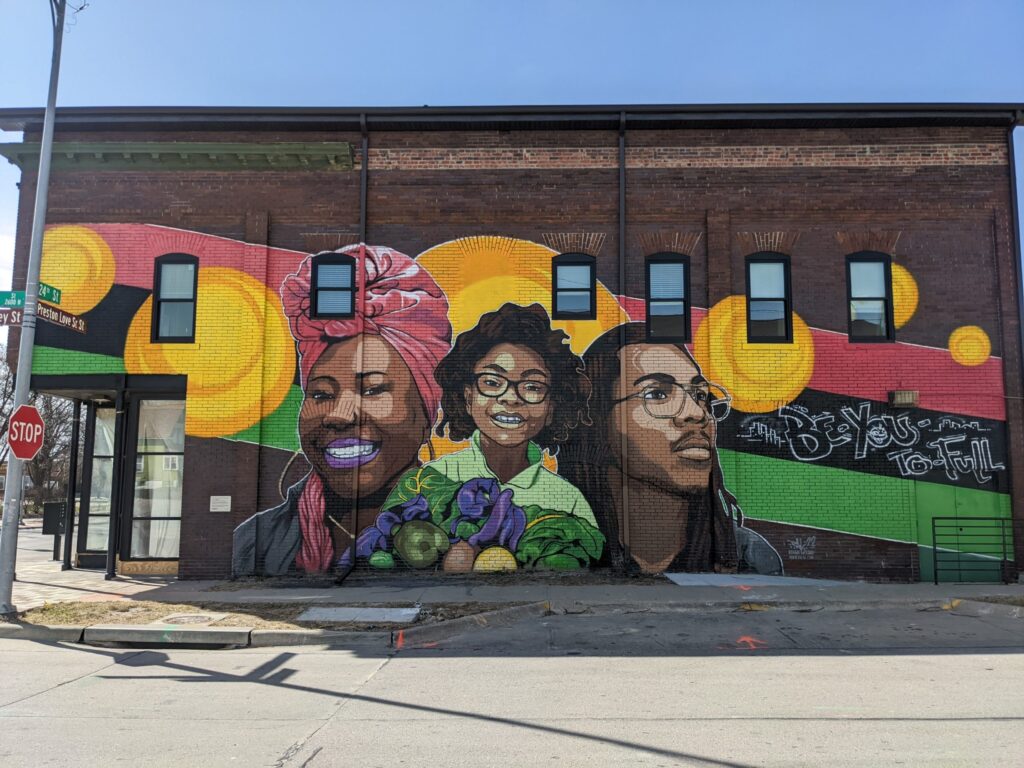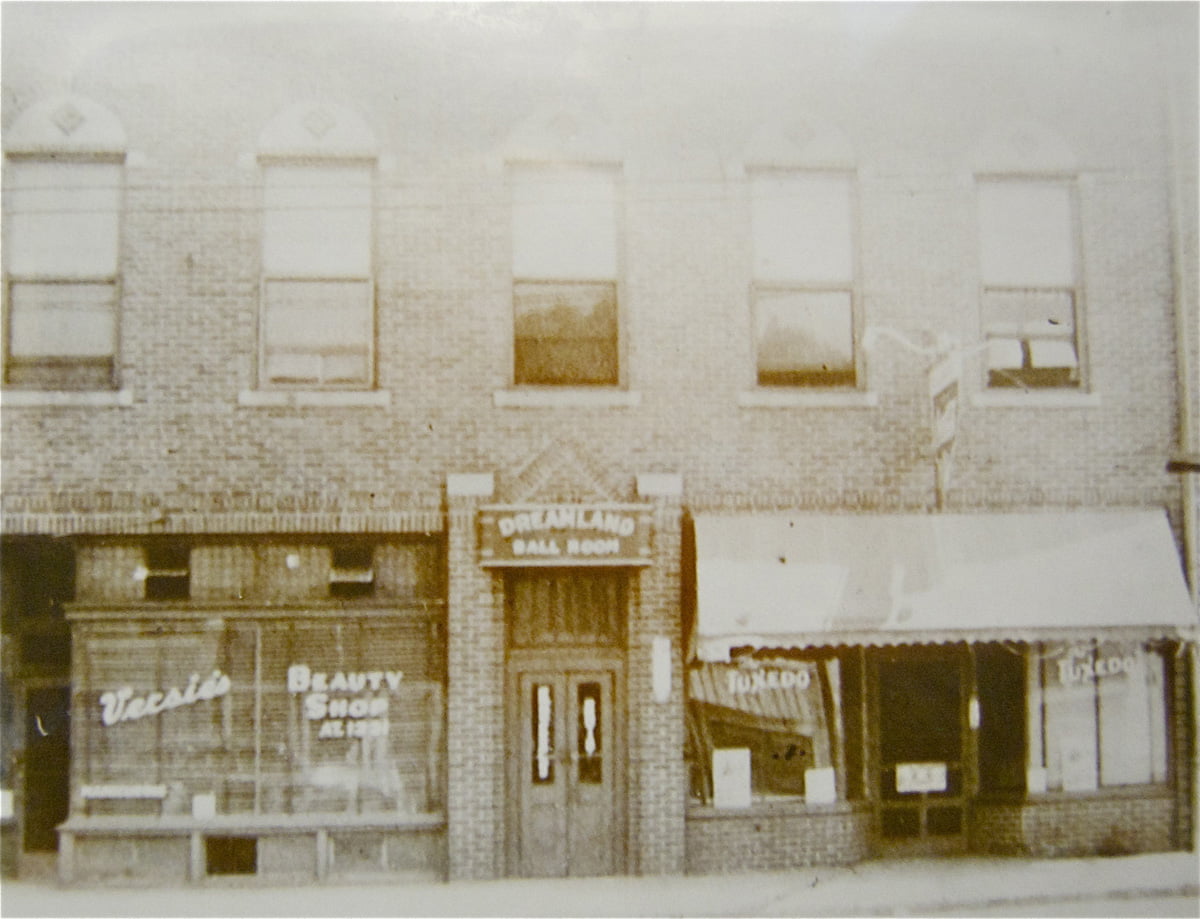Nestled just north of Omaha’s bustling downtown lies the Near North Side, a neighborhood steeped in vibrant history and poignant struggles. This historic neighborhood pulsates with its residents’ stories, struggles, triumphs, and unwavering sense of community. Today, it stands as a testament to the resilience of the African American community, who carved out a haven amidst societal barriers and systemic racism. This blog delves into the lesser-known stories of these communities, their triumphs against adversity, and the enduring spirit that continues to define them.
From Scriptown to Sanctuary: Residential Shifts
Our story begins in the mid-19th century, when this patch of land, then known as Scriptown, was awarded to legislators who championed Nebraska’s statehood. Grand Victorian homes graced the streets, housing prominent white residents like bankers and politicians. But as the city and its streetcar lines expanded, these affluent families moved west to the suburbs, leaving architectural gems waiting for repurposing. African Americans began filling the vacancies after migrating from the South in search of opportunity.
The number of African Americans in Omaha doubled between 1910 and 1920, as many took jobs in the meatpacking industry. In 1910, Omaha had the third largest black population among post-Reconstruction western cities.
Overcoming Adversity & Forging Community
The influx of Black residents in the late 19th and early 20th centuries transformed the Near North Side. Distinct enclaves like Casey’s Row, home to railroad porters, pulsated with life. Others, like Little Italy and Little Bohemia, reflected the diverse tapestry forming within the community. Yet, amidst this vibrancy, racial segregation loomed large.
Racial discrimination and economic hardship cast long shadows. Restrictive housing covenants and discriminatory practices like redlining confined Black residents to specific areas, stifling economic mobility. White flight further eroded the community’s economic base, leaving behind scars of disinvestment and neglect. Urban renewal projects, including the construction of the North Freeway, displaced residents and destroyed landmarks, erasing vital pieces of the community’s history and severing its physical connection to downtown Omaha.
The area suffered significant tornado damage in March 1913. At North 24th and Lake Streets, a large crowd was enjoying an Easter Sunday performance when the five-block-wide tornado flattened the building, killing more than two dozen people. Other brick structures in the district suffered similar damage, and more people died there than in any other part of Omaha. The Easter Day tornado left 103 people dead throughout the city. According to the National Weather Service, it “destroyed 800 homes [and] wrecked another 2,000 homes with a total monetary loss of over $8,700,000.”
During the Omaha Race Riot of 1919, a violent white mob descended on the Douglas County Courthouse in pursuit of Will Brown, a Black man accused of the rape of a white woman. The mob chased and beat every African American who ventured near the courthouse. After setting the building on fire, the mob hung Brown at 18th and Harney Streets, fired a barrage of bullets at his body, then dragged it through the streets tied to a vehicle before burning it with lantern oil and further parading it around downtown. These sickening acts of hatred motivated the city to declare martial law. More than 1,600 U.S. Army troops occupied 24th Street and other parts of North Omaha to protect Black Omahans and their property, according to History Nebraska.
Despite violence and oppression, a remarkable spirit of resilience took root. Churches like St. John’s AME, the first church for African Americans in Nebraska, became more than just spiritual sanctuaries. They served as social hubs, nurturing community and fostering activism. Organizations like the Housewives League championed social justice, fighting for equal rights and economic opportunities.
Omaha’s Street of Dreams
By the 1920s, the heart of the Near North Side beat on 24th Street, aptly nicknamed the “Street of Dreams.” The bustling corridor was lined with Black-owned businesses and social hubs. Cultural landmarks like the iconic Dreamland Ballroom, where legends like Duke Ellington and Count Basie played, pulsated with the rhythm and joy of jazz.
“There were hotels and stores, cafes and pubs, drug stores, and professional offices lining the way from Dodge Street to Read Street,” according to North Omaha History. “More than a dozen important intersections hosted streetcar stops, and light industrial development was mixed along the route.”
24th Street was more than just commerce and entertainment; it was an illustration of Black excellence. Doctors, lawyers, educators, and entrepreneurs thrived, their success stories woven into the very fabric of the community.
A Legacy of Resilience
Today, the Near North Side stands as a testament to resilience. While challenges remain, a spirit of renewal is palpable. Historic buildings are being restored, breathing new life into the architectural tapestry. For example, the Jewell Building, the former home of the Dreamland Ballroom, now houses the Great Plains Black History Museum, the Omaha Economic Development Corporation, and 100 Black Men of Omaha. Vibrant murals adorn brick walls, narrating the community’s rich history. The Near North Side is more than just a neighborhood; it’s a living, breathing testament to the human spirit.

Mural in Omaha’s Near North Neighborhood, “The Ancestor, The Identity, and The Seed” by Reggie Leflore.
Additional Resources
History of the Jewell Building and Dreamland Ballroom

